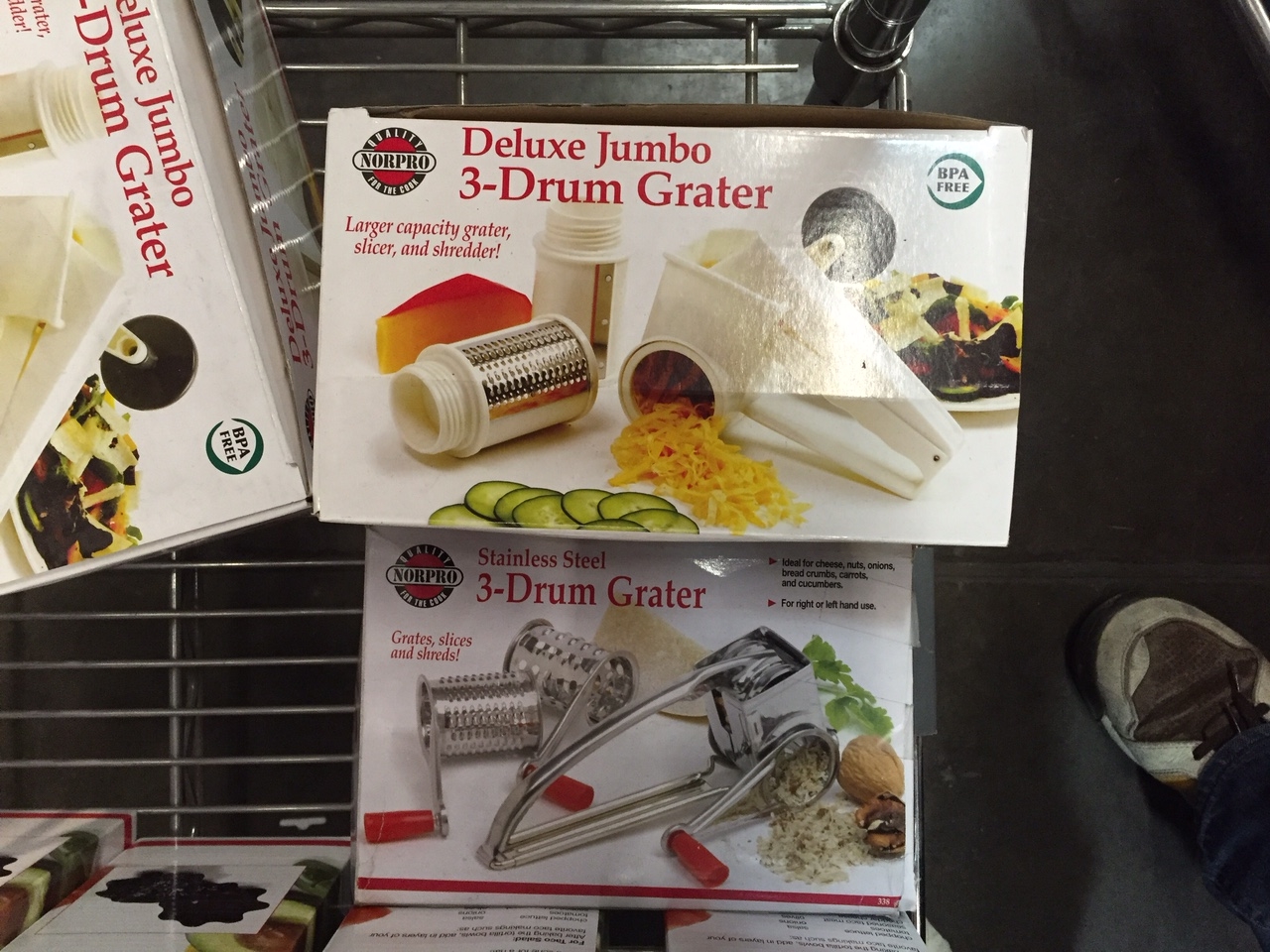The world is full of potential defendants. You don't need me to tell you this. In America, litigation capital of the universe, home of Nancy Grace, Judge Judy, and Ally McBeal, you are born knowing it. Naturally, the path to riches lies in a cup of McDonald's coffee spilled in your lap.
Potential defendants are especially concentrated on construction projects. You have to hire a lot of different people, who'll charge you a lot of money to do often amorphous things that are well outside your zone of expertise. When you combine large amounts of money, asymmetries in information, lots of moving parts, and abundant opportunities for human error, the stage is set for conflict.
Shiba Ramen just concluded a lawsuit against its architect and another building consultant. It wasn't something we wanted to do, and it was a distraction we could have done without. But they made a pretty clear mistake in their drawings, forcing us to rip out plumbing fixtures from the concrete subfloor and replace them, and they completely refused to take any responsibility for the damage. We've learned that when you start a small business and have to hire service providers, it won't take long for somebody to try to get away with something at your expense. When the inevitable does happen, you need to be tuned in enough to figure out what went wrong, and you need to be able to do something affirmative to protect your interests.
Ramen Chemistry offers a case study on Shiba Ramen Corp. v. Sacramento Engineering Consultants, et al. This time, I'll set up the conflict, and next time walk through the lawsuit itself.
Ally McBeal. A completely accurate representation of lawyering in the big city.
Appetizer: Breach of Contract
Our architectural project was a pretty minor one. The space was small, and a lot of the details were filled in by parties other than the architect. But rest assured, reader, opportunities for conflict are present in abundance, no matter the size of your project! Just spend some time scrutinizing the bills, and who knows what you'll find! Now, just so you have the context right, I work in a service business myself and I'm required to make a written record of what I do for a client, in quanta of six minutes. It's incredibly onerous and lawyers hate doing it, but long gone are the days where a lawyer can send out a bill for "services rendered" and expect the client to pay it.
When we got "services rendered" type bills from our architect, I was naturally suspicious. I was on alert from the architect's very first bill, when it tried to charge us for mileage driven to a planning meeting, where it was present on behalf of the landlord (i.e., in an adverse position to Shiba Ramen) and before I'd even interviewed it for our project! So when we got a $1000+ bill for 7.0 hours of "Construction Administration," weeks before our construction even started, I asked the architect for an explanation. The response was vague--correspondence with contractors, bid assistance, and review of the kitchen designer's changes--and left us wondering how in the world the described tasks could have taken a whole business day. I pressed for more detail, asking who the architect had talked to, why those conversations took so long, and why we'd never been asked for approval or otherwise looped into the conversations.
When the architect finally responded with a detailed breakdown, everything was clear. The majority of what had been called "Construction Administration" was, per the terms of our contract, properly categorized as "Construction Drawings" (aka CDs). What's the difference? Our contract set a fixed fee for the drawings, with Construction Administration--a very discretionary construction management component of the job--billed on an hourly basis. The architect had hit the fee cap for the drawings, so it started putting drawing-related tasks in the administration bucket and charging us accordingly. On top of this, the contract required the architect to get our approval for any fees over certain estimated amounts. The bills were now nearly $2000 over the estimate, yet we'd never been asked for approval.
Fairly displeasing, don't you think? Especially because we were starting to get hit with huge construction bills from the general contractor! Not only was the architect breaching our contract, but it was making it as hard as possible for us to figure out what it had been up to. To be fair, we would have approved some of the overcharges, had the architect bothered to ask for approval, but certainly not all of them. We demanded a 50% write-down on the unapproved amounts. The architect agreed, we chalked it up to a miscommunication, and we left things amicably enough. Peace, however, was not to last.
Floor Sink: Looks like a little thing, but the plumbing is set into the concrete subfloor.
Main Course: Negligence
Not long after resolving the architect's inflated, extracontractual bills, a bigger problem presented itself, this time with the construction itself. The kitchen design people had come by the construction site one day to prepare for installation of our equipment, and realized three "floor sinks" had been installed in the wrong location. These sinks are designed to handle drainage from certain pieces of equipment--i.e., the pasta cooker and the dishwasher--and they have to be located in very specific places relative to the equipment they service. The location is dictated by either the Health Code or the equipment's operational requirements. The kitchen people told us we had to move the sinks before construction could continue. The concrete floor had to be opened up with a jackhammer and the plumbing redone. Cost = $3500, plus associated delay.
How did this happen? Our kitchen designer had specified the floor sink locations correctly in its original plans, which it had provided to the architect and mechanical, electrical, plumbing ("MEP") consultant. The architect and the MEP took the kitchen plans and created CDs. The CDs went to the building and health departments for approval, and then were used by the building contractors to construct our space. For some inexplicable reason, the architect/MEP moved three of the floor sinks relative to the kitchen designer's specifications, and never told anyone. This unannounced change made its way through permitting undetected and soon was set in concrete--literally.
Exhibit A: The offending changes are buried in a small drawing in the upper right corner of the 21st and last page of the construction drawings.
The Mistake Nobody Made that Unnecessarily Cost Me $3500
So when something like this happens, who pays for it? We soon learned that when you're a small job, from whom repeat business is not expected, you are expected to foot the bill. I went to our architect, told him the sinks were in the wrong locations relative to the accurate information he'd received from the kitchen design people, we'd had to sign off on this remedial work, and I asked him to find a way to see that Shiba Ramen didn't end up with this cost.
He basically told me to pound sand. No, this wasn't his responsibility. Never mind that a completely unnecessary (and uncommunicated) change had been made to the kitchen plans on his watch. His name on every page of the permitted drawings. This guy had a million reasons why he wasn't on the hook for this. The kitchen designer had made a mistake, the sinks weren't "dimensioned," we'd already approved the repair work on our own, that he'd given us a good deal on the job (i.e., written down dubious charges his last bill?). My absolute favorite was when he tried to blame us! He said we "were given ample opportunity to review the drawings" and "any party may have discovered there was a discrepancy." My goodness, that is rich. See, e.g., Exhibits A-C.
After a few increasingly testy emails between me and the architect, I made sure to rope in everyone involved. I was being a real pain in the ass about the whole thing. The kitchen designer and the MEP are now sucked into the swirl of of emails, all pointing fingers at each other. We'd hired three technical experts to collaborate on the pieces of these drawings, and in the end our concrete floor has to be jackhammered open to fix somebody's unexplained editorializing of somebody else's specifications. Nobody wants to take any ownership over this, but obviously someone is responsible, right? I'm the customer, they're the experts and they made the drawings. At one point the sinks were in the right place, then in wrong place. That's sort of it, isn't it?
Exhibit B, Left: Kitchen designer's original plans. Sink at lower left located away from dishwasher 33. Sink in middle located under table 6, away from pasta cooker 22. Exhibit C, Right: Construction drawing version. Sink at lower left now located under dishwasher 33. Sink in middle located under pasta cooker 22. The sinks were away from the equipment in the original drawings, but were under the equipment in the construction drawings. That was the problem.
Truly, People, Clarification is Only a Phone Call Away
The conversation eventually turned toward the MEP, who appears to have made the offending changes. Although he was on notice of the problem before we remediated it, he didn't acknowledge the issue until the sinks had already been moved. At this point, he tried to argue that the sinks didn't need to be moved, and that changes shouldn't have been made "in the field" without his input. No, this was not his responsibility! No, indeed.
But this screw-up had threatened to completely halt our construction, and we were losing money every day we weren't open. We couldn't wait around for this guy to finally show up and then spend days debating the metaphysics of sink relocation. In any case, kitchen equipment and health department permitting were the kitchen designer's areas of expertise, not the MEP's. If the kitchen designer insisted it was necessary, I was going to green light the fix.
As we headed toward impasse, the MEP tossed me this gem, ostensibly with a straight face: "Any required clarifications are a phone call away." Going even further, he told me I should have paid him $1000 to attend a "preconstruction meeting." His attendance, he was quite assured, "would have avoided the installation problems." Surely he didn't mean to imply we should have paid him a relatively exorbitant sum for the opportunity to catch one of his own mistakes?
That, I told him, was nonsense. Still, after all these dozens of emails, nobody has even told me why the sinks were moved in the first place. I made a settlement demand and told them, guys, the next time you hear from me is when I serve each of you with a summons.
Getting no response, I waited four months and, in my subsequent email, served each of them with a summons.
Next time, it's to the courthouse we go!

















